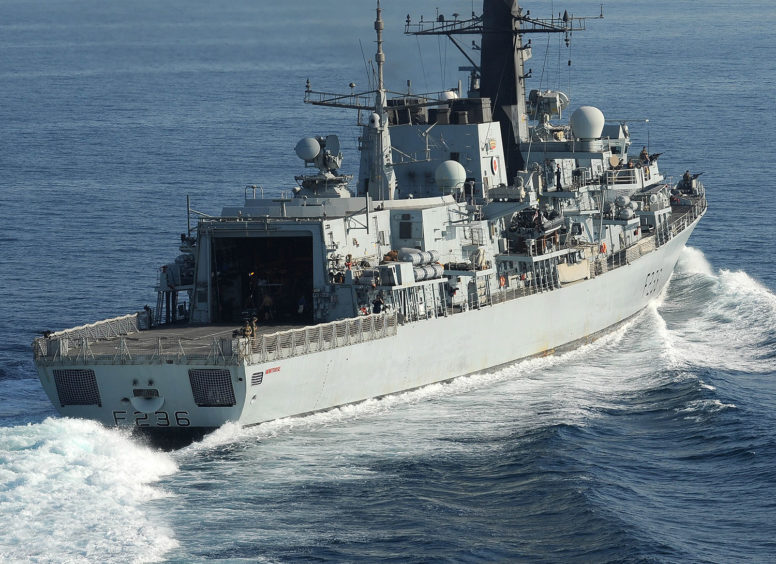
As Norway predicts Russian spies will target its energy sector, the UK oil and gas trade body said it is continuing with “regular engagements” with the UK government on any threats on this side of the North Sea.
The Ministry of Defence (MoD) meanwhile has underlined a package of measures to protect UK subsea infrastructure.
Earlier this week, Norwegian authorities outlined in a National Threat Assessment for 2023 that the country’s energy sector may be a target for Russian spies following the invasion of Ukraine.
When asked if this is a threat the UK predicts as well, Offshore Energies UK (OEUK) HSE and operations director, Mark Wilson said: “Offshore Energies UK remains engaged with relevant government bodies, including the Department for Energy Security & Net Zero (formally BEIS), North Sea Transition Authority, Health & Safety Executive, and Police Scotland on resilience and security of UK energy supply.
“The physical security of offshore and onshore energy infrastructure continues to be part of these regular engagements.”
When asked for comment the Ministry of Defence declined, however, it did point in the direction of some recent key projects that set out to increase subsea defence.
In January this year the first of two undersea surveillance ships, currently named ‘Topaz Tangaroa’, arrived at Birkenhead, Merseyside.
Speaking in the House of Commons, Defence Secretary Ben Wallace said:
“In the face of Russia’s illegal and unprovoked invasion of Ukraine and Putin’s reckless disregard of international arrangements designed to keep world order, it is right that we prioritise delivering capabilities which safeguard our national infrastructure.
“To effectively address the current and future threats, we will now invest in MROS ships that protect sensitive Defence infrastructure, and civil infrastructure, to improve our ability to detect threats to the seabed and cables.”
Topaz Tangaroa
The 321.5-foot-long vessel, currently known as the Topaz Tangaroa, will act as a mothership, operating remote and autonomous offboard systems for underwater surveillance and seabed warfare.
After arriving in Merseyside, the vessel was prepped to be repainted before being fitted with “critical military equipment.”
Following this, it will take on its role as the first of two Multi-Role Ocean Surveillance (MROS) ships, operated by the Royal Fleet Auxiliary (RFA).
The Topaz Tangaroa is set to begin operations in the summer of this year.
When the ship arrived at Birkenhead months ahead of schedule, Mr Wallace said: “The first of two dedicated subsea surveillance ships will join the fleet this Summer, bolstering our capabilities and security against threats posed now and into the future.
“It is paramount at a time when we face Putin’s illegal invasion of Ukraine, that we prioritise capabilities that will protect our critical national infrastructure.”
Head of the Royal Fleet Auxiliary, Commodore David Eagles RFA, said: “This is an entirely new mission for the Royal Fleet Auxiliary – and one we relish.
“We have been entrusted with supporting a key operation to safeguard the UK’s infrastructure, security and prosperity and that fills all of us in the RFA with pride.”
£15.4 million crewless Navy submarine
Just one month before the Topaz Tangaroa arrived in Merseyside, in December 2022, a £15.4 million contract was awarded to the Plymouth-based tech firm MSubs for a bespoke crewless submarine.
The submersible is set to be delivered to the Royal Navy in two years and “will further advance the UK’s ability to protect our critical national infrastructure and monitor sub-sea activity,” according to the Ministry of Defence.
Project Cetus, named after a mythological sea monster, is said to be the next step in the Royal Navy’s experimentation with autonomous underwater systems.
This vessel’s maximum operational depth will surpass the current naval fleet of subsea ships, meaning Cetus will provide more opportunities for the Royal Navy to support of UK defence.
Once completed, Cetus will be able to cover up to 1,000 miles in a single mission and will measure just shy of 40-foot-long.
The size of the vessel allows it to fit in a shipping container, meaning it could be deployed anywhere in the world.
It will be the largest and most complex crewless submersible operated by a European navy and it has been designed to operate with all of the ships from the Royal Navy fleet as well as those of the UK’s allies.
On this project, Mr Wallace said: “In order to meet the growing threats to our underwater infrastructure, the Royal Navy needs to be ahead of the competition with cutting-edge capabilities.
“Project Cetus, alongside bringing forward the MROS ships, will help ensure we have the right equipment to protect the security of the UK and our Allies.”